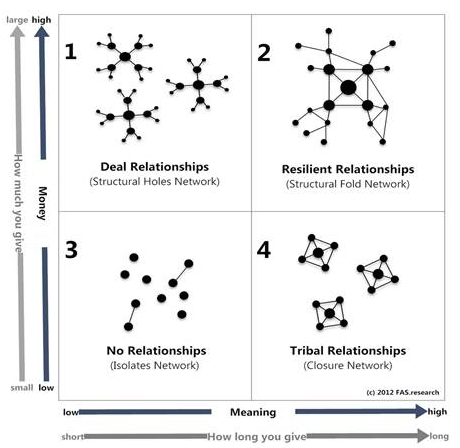
The Power of Networked Learning
Organizational Leadership & Change Management
In one of the panel presentations at the Education Elements Personalized Learning Summit , Julia Freeland-Fisher (The Clayton Christensen Institute), Anthony Kim (Education Elements), and Lydia Dobyns (New Tech Network) shared what they’ve been reading, thinking, and writing about networked teams and learning. All three have new books out this year exploring the power of networks. I’ve also been thinking a lot about how we learn and how we share information as I’ve worked with Alexis Gonzales-Black and Anthony Kim to develop activities to support their book, The NEW School Rules.
During the panel, Julia shared a statement that has stuck with me since. “We do not accomplish things alone in life. We need to stop measuring students only by their individual achievement.” I agree with Julia wholeheartedly. What we accomplish in life is based fundamentally on our connection and collaboration with others. And yet we often build systems to support and reward individuals instead of the collective.
Real Life: Reshaping networks
One of my favorite podcasts is How I Built This. Guy Raz interviews entrepreneurs who have built successful companies like Southwest, Whole Foods, Crate & Barrel, and Instagram from the ground up. At the end of each episode Guy asks, “How much of your success is because of hard work and how much is because of luck?” I always wish he added a third option – “How much is because of your networks and privilege?”
As our team kicks off a number of new projects that serve clients across entire regions and states, Julia’s word have inspired me to spend more time thinking about how we can build better networks to distribute learning and privilege. We are asking questions like:
- How can we set up networks that aren’t reliant on a central figure or hub?
- How can we set up networks that encourage meaningful collaboration?
- How can we set up networks that build connection and dedication instead of transaction?
Merely by asking these questions, we have begun to reshape the way we build support systems and communication channels. As this work deepens I look forward to sharing the impact of these decisions and actions.
Visualize: Types of networks

Image Credit: Alliance For Philanthropy and Social Investment
Use It: Reflect on your network
Use the network quadrant above to think about how your own teams, groups, or communities are structured. While Alliance labels the y-axis as “money,” I like to think of this axis as “contribution”– how much you give. Similarly I like to think of the x-axis as “dedication”– how long you give. In reflecting on one organization I work with, I noticed much of the team to team collaboration fell into quadrant 3– transactional networks with no relationships. For these teams, we’ve started focusing more on casual interactions to build trust and connection, and less on specific work projects and deadlines. If you want to learn more about networked learning check out this article from The Alliance For Philanthropy and Social Investment and Designing A Collective Learning System from Eva Mejia at the Carnegie Foundation. You can also join me in conversation at @kearaduggan.
This blog post was originally published on The KikiBrief.
About Keara Mascareñaz
Keara is a Managing Partner at Education Elements who focuses on how to build and scale a culture of innovation in large systems, how to create national communities of collaboration, and how to keep laughing when pursuing daunting, large-scale changes. She was lucky to collaborate with co-authors Alexis Gonzales-Black and Anthony Kim to design the website and toolkit for The NEW School Rules: 6 Practices for Responsive and Thriving Schools.




